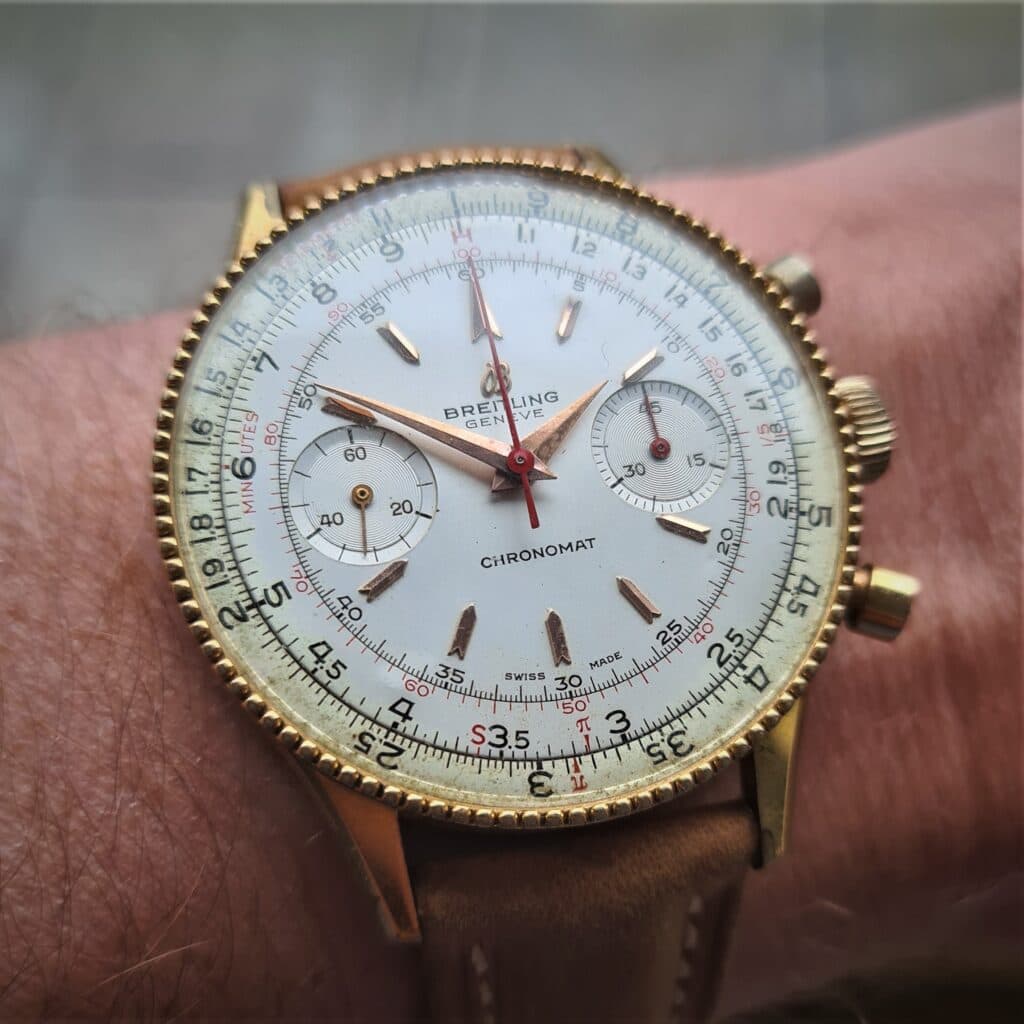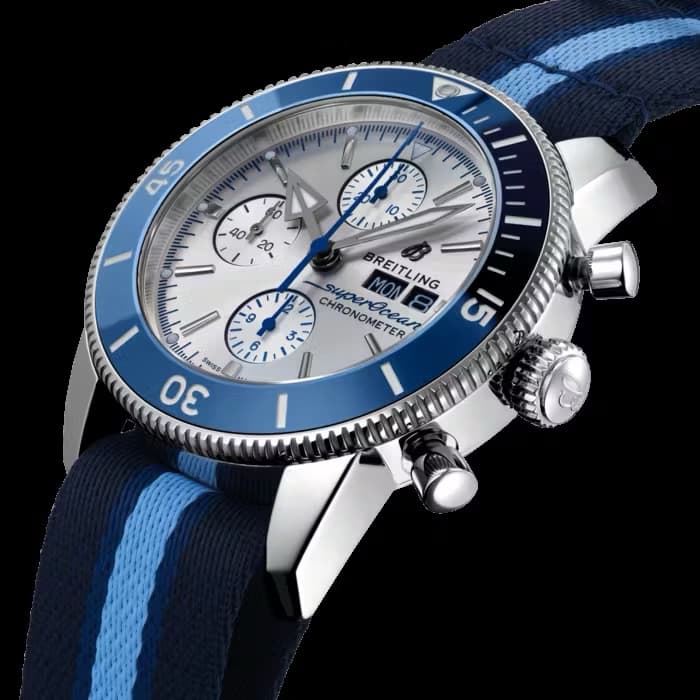Our last Blog Post looked at the history of Watch Manufacturing, and we hope it piqued your interest in the long history of horology. There are many excellent books on the subject that we would be happy to recommend. The story of watch manufacturing in the Twentieth century is a fairly straightforward one of modernisation, but the details of how complex and varied it is today are of great interest to many watch owners. This week’s post will try to outline some of the details, but much more can be found online or even by visiting a watch “manufacture” as they are known. The Watch Collectors’ Club is very excited to be visiting a modern watch factory on February 10th 2023, and there are still spaces available for those who want to join us; details can be found on our Events page.
The Modernisation and Mechanisation of Watchmaking
Watchmaking is a conservative industry, but the constant demand for low priced watches led watch companies to find ever more ways to incorporate mass production techniques in the same way as other industries. The largest amount of push back against machine manufacture of parts was from luxury watch brands, and there are interesting statements from the likes of Henry Stern, who ran the luxury watchmaker Patek Philippe in the 1930s – 50s. He said the following:
“Everything that a hand can do better than a machine, we will do. But when machines can assist the work of a person, we will not adhere blindly to tradition.”
 Henri Stern (left), was the first Stern family member to manage Patek Philippe. He dramatically changed its manufacturing processes before the Second World War. Photo Credit. Patekphilippe.com
Henri Stern (left), was the first Stern family member to manage Patek Philippe. He dramatically changed its manufacturing processes before the Second World War. Photo Credit. Patekphilippe.com
The rise of the Japanese Manufacturers
Like in many other industries, the real pioneers of low-cost watch manufacturing arose in Asia, namely the two companies Seiko and Citizen, who built companies capable of producing huge volumes of low-cost mechanical movements. For example, Citizen Group own the manufacturer Miyota, which has produced over 2 Billion quartz movements over the last 40 years. These numbers are only made possible by fully automated manufacturing. Today, watch parts and movements are made in China, Malaysia, and Japan, with assembly also taking place in those countries for movements found in a huge number of brands, large and small.
 A Seiko Group Quartz Movement Automated Production Line.
A Seiko Group Quartz Movement Automated Production Line.
A Modern Supply Chain in Switzerland
While the Twentieth Century saw a huge amount of turmoil in the Swiss Watch Industry, including the period of the so-called “Quartz Crisis” in the 1970s, the country remains a watch industry powerhouse. There are manufacturers large and small making everything separately and together: for example, Rolex do almost everything themselves, from smelting their own steel to making their own hands and dials, before assembling and testing the whole watches in their factory in the Les Acacias area of Geneva in Switzerland. However, for every part of a modern watch, there are independent suppliers large and small. There are companies that only make the gears or wheels of the movements, those that specialise in hands or dials, and workshops that create the complications that sit on top of base movements and provide functions like a chronograph, stopwatch, or calendar.
Some of these parts suppliers are famous in their own right, thanks to important innovations, interesting features they invented, or partnerships with famous brands. The Renauld & Papi movement workshop is now owned by Luxury brand Audemars Piguet, but continues to design and manufacture complications for them as well as other leading brands.
It must be understood that most modern watches will contain parts from many different manufacturers. Rolex are unusual in their dedication to making everything themselves. Most other brands will use a mixture. One thing that is important is the Swiss Made designation. For this to hold, 60% of the components of the watch must be made in Switzerland and it must be cased (assembled) and tested in Switzerland also. Only watches that fulfil this can write Swiss Made on the dial.
 Rolexes largest facility in Geneva where the assembly and testing of all of their watches takes place.
Rolexes largest facility in Geneva where the assembly and testing of all of their watches takes place.
Hand Making and Hand Finishing
It is an important component of luxury watch-making that some parts of the watch are hand made or hand-finished and that the watch is assembled by hand. This is not true of low-priced watches, where most have been engineered to be almost entirely made by machine. Quartz watches usually do not feature movement finishing as the movements are hidden behind the case back. For mechanical watches, it is common today to display the movement through sapphire casebacks. This gives the opportunity to create beautiful finishes to the parts and the movement itself. These finishes can be done by machine, but as a sign of commitment to luxury, many high-end brands do them by hand.
One exciting thing to research when looking at luxury watch brands is how much is done by hand. For example, the luxury German brand Lange & Sohne finish almost every aspect of the movement by hand, including parts that cannot be seen. Swiss brand Patek Philippe are also famous for hand-finishing parts that cannot be seen. They do this as a commitment to quality for their customers, indicating that if they take that level of detail for the parts that cannot be seen, the quality and reliability of the whole watch will be very high.
 A Lange & Sohne Meisterwerk Minute Repeater. Every single part of this watch is hand finished using a variety of complicated techniques.
A Lange & Sohne Meisterwerk Minute Repeater. Every single part of this watch is hand finished using a variety of complicated techniques.
Testing and Quality Control
Watchmakers have used independent organisations to verify the accuracy and reliability of their timepieces for a long time, and the two Swiss certification agencies of COSC and METAS certify millions of high-quality timepieces as chronometers per year in Switzerland. Rolex also test every single watch after it has been finished to ensure it meets their promised high standards, including testing their dive watches to 125% of their rated water depth. Most companies don’t have the resources to do this, so will have a different Quality Control procedure. Often these are done by highly trained people, and it is a mark of a quality brand that is happy to advertise and talk about this. One good example is the young British brand Fears, based in the UK, where the founder regularly posts the details on his Instagram account of the quality control procedure he undertakes on every watch before it is delivered.
 Rolex Explorer II watches in one of the machines they use to test waterproofing and pressure resistance in their Quality Control Process.
Rolex Explorer II watches in one of the machines they use to test waterproofing and pressure resistance in their Quality Control Process.
Microbrands Everywhere
One of the huge benefits of the move to highly automated modern manufacturing systems is the collapse in the cost of designing and making a watch to a good standard. This has been demonstrated by the explosion of startup watch Microbrands over the last 15 years. Using common design software and Chinese manufacturing and assembly, it is easy for people to make a small run of new watches for a very low price. This has allowed the flourishing of design ideas, the establishment of new brands in countries with no history of watchmaking, and the resurrection of older brands with new ideas and energy. We encourage you to look out for microbrands you like the look of and investigate their background.
Continue exploring
Dive into more content from The Watch Collectors Club.






